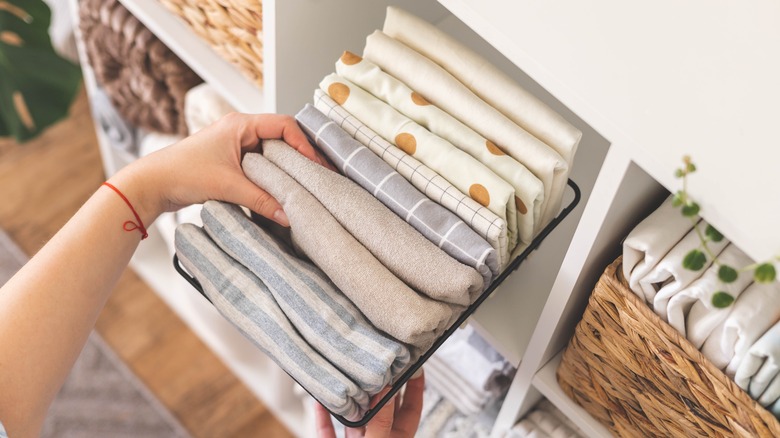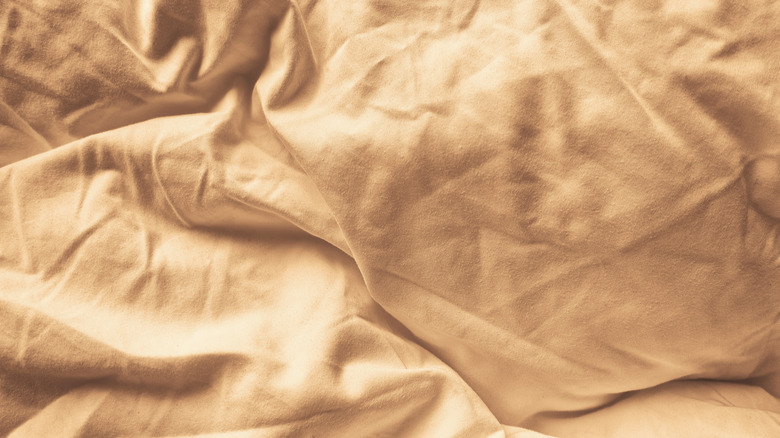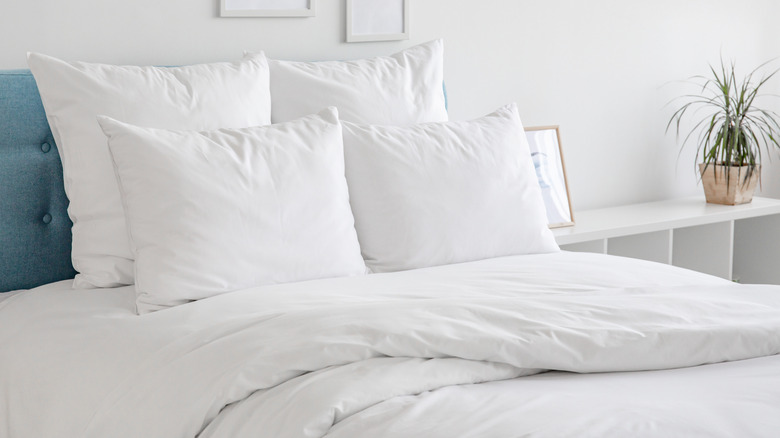Microfiber Vs. Cotton Sheets: Which Is Right For You?
Humans have been using bed coverings for as long as we've had beds to sleep on. Our earliest ancestors used straw mats and animal furs as bedding, but it wouldn't be until the ancient Greeks and Romans came along that sheets became popular. They were made using wool and linen; the latter was described as a durable fabric that could be found everywhere in Egypt. Even up to the early 19th century, people were using linen to make their sheets, towels, and pillowcases, per Encyclopedia.com. Things changed with the invention of the cotton gin, which made it possible to remove seeds from cotton fiber, turning them into fabric. This increased the availability of cotton at lower prices.
Today we're spoilt for choice when it comes to fabric options for our bedding because sheets come in a wide range of materials, from brocade and silk to cotton and bamboo. But the factors that determine the sheets that are right for us remain the same: How the sheets feel against your skin, if they keep you comfortable when you are sleeping — whether that's hot or cold, how long they last, and if you can find a decorative range that suits your bedroom's interiors. For many people, the choice comes down to microfiber or cotton.
Why you might prefer microfiber sheets
While some of us might turn up our noses at synthetics, know that a lot has changed since the days of polyester sheets, which some of us might have tried and found to have very little breathability. Today's microfiber sheets are far from that – the fabric is now made with fibers that include wood pulp, polyester, and nylon.
There are plenty of reasons people might choose to go with microfiber sheets; they are easy to care for, and for those who feel texture is important, microfiber ticks a box because the sheets are soft and smooth and are less likely to stay crumpled. If you get cold while sleeping, microfiber is for you because the material traps heat, even if it feels lighter than cotton.
But microfiber has several downsides. For one, these sheets can bunch because they are so smooth. Since they are synthetic, they also trap heat and may not be suitable for those with allergies and sensitivities. Unfortunately, because they are so durable, they are also prone to getting stained.
Why you might prefer cotton sheets
If you are much more into the idea of using all-natural fabrics for bedding, then cotton may be your preferred choice. Cotton sheets have been around for over a hundred years, so manufacturers have had plenty of time to get them right. They come in multiple weave options like sateen (smooth and silky) or percale (lightweight and crisp), as well as thread, counts that usually run between 200 and 400 — the higher the thread count, the finer the fabric will feel against your skin. And like microfiber, cotton is durable and stands up well to the wear and tear of everyday washing.
Cotton sheets are best for those who want softer, more breathable bedsheets and are seen as the perfect choice for sleepers who tend to get hotter as the night progresses. They are easy to care for and become softer each time they are washed. But because they are made with natural material, cotton isn't forever and will degrade with age. As a result, cotton sheets may need to be replaced much more frequently than microfiber sheets.


